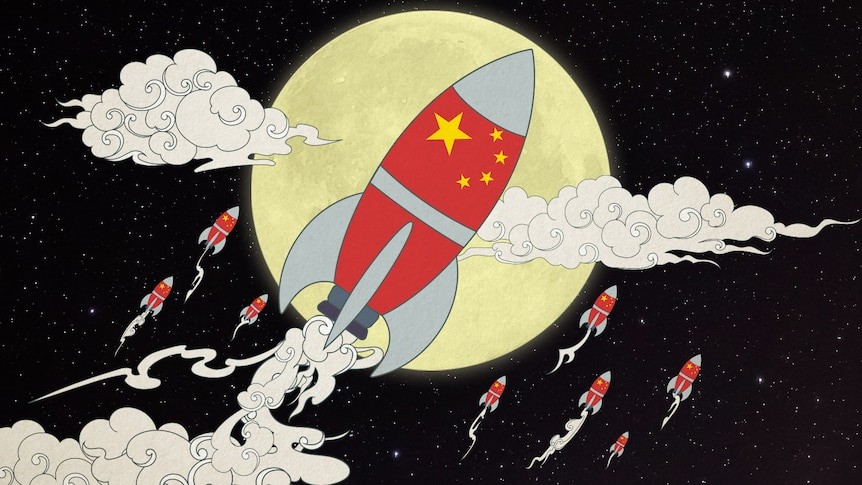A recent report from RAND highlights an increase in China’s willingness to take risks and its expanding strategic operations in space, a bold move designed to contest the US’s supremacy in this field. The report scrutinizes publicly available Chinese defence documents, offering an extensive review of the People’s Liberation Army (PLA)’s viewpoints on the escalation in space over the last twenty years.
The report posits that China’s leaders perceive the US as a powerful yet waning force and foresee an escalation in future aggressive strategies, including an increased militarization of space. It suggests that the PLA’s approach is a blend of deterrence and intimidation, a strategic combination designed to compel adversaries to comply with its political goals or risk a catastrophic war in space. The report details the PLA’s changing attitudes towards escalation in space. These attitudes indicate an increasing ambition to proactively influence the rapidly changing strategic landscape. In its early stages, the PLA’s strategic thought was primarily theoretical, with a focus on averting conflict.
In 2013, a shift was observed in the PLA’s strategy towards space operations, as highlighted by RAND. The focus was redirected towards military rivalry and managed escalation, with the end goal of accomplishing political aims. The strategy is structured around a four-tier escalation hierarchy, which includes showcasing space prowess, conducting space military drills, deploying space forces, and executing space strikes. The ultimate objective of this strategy is to pressure adversaries into capitulation, all while steering clear of an all-out conflict.
The report indicates that the PLA’s growing willingness to take risks in space is largely driven by its perception of the US as a power in decline, likely to turn to militarization. It further suggests that the increased risk tolerance in space within the PLA has been significantly shaped by the influence of Chinese President Xi Jinping. RAND advises US officials to be prepared for swift decision-making processes with minimal communication and not to bank on the PLA’s cooperation during space crises. The report further states that the US Space Force (USSF) should be ready for the PLA’s aggressive manoeuvres in space, even during times of peace. China might choose to display its space capabilities by publicly conducting low-intensity tests of advanced space equipment, often during peacetime or at the onset of a crisis, as a way to demonstrate its capabilities and determination without resorting to conflict.
In May 2023, Asia Times reported that China’s compact space plane returned to Earth, landing on an undisclosed runway in the Gobi Desert, after orbiting for 276 days following its launch in August 2022. The landing site for China’s space plane could have been in the vicinity of the Lop Nur nuclear test site, a location previously used for space plane recovery, or at the Dingxin Test and Training Base, a site known for the PLA-Air Force’s (PLA-AF) frequent large-scale drills. The event was hailed by Chinese state media as a significant milestone in the country’s space exploration endeavours.
In the same month, Leo Labs, a commercial space tracking firm, revealed that China’s mini space plane had performed several manoeuvres and docking operations with a smaller object during its mission. Meanwhile, in October 2021, the Financial Times reported a covert test by China of a nuclear-capable hypersonic missile that circled the Earth before heading to its target. This test, which reportedly surprised US intelligence, underscored China’s substantial advancements in hypersonic technology. The missile was reported to have missed its target by a mere 38 kilometres.
The Financial Times highlighted the difficulty in tracking hypersonic glide vehicles due to their manoeuvrability and lower trajectory, making them potential threats to US missile defences. Amid escalating US-China tensions and China’s military actions near Taiwan, the US voiced concerns over China’s expanding military prowess, citing it as a source of regional and global instability. Conversely, China downplayed the hypersonic missile test, describing it as a standard space vehicle test for reusability.
China possesses the strategic ability to pre-position its space forces for potential offensive operations, launching and manoeuvring space assets to create an imminent threat perception, causing adversaries to reassess their actions. Sam Bresnick’s August 2023 article in Breaking Defence underscores China’s accelerated expansion in the space sector, with a marked increase in satellite launches in the past five years, positioning it as the world’s second-largest space power after the US. Bresnick emphasizes that these satellites, now part of the PLA’s military doctrine, have enhanced capabilities in navigation, surveillance, communication, and missile warning systems.
He further states that China’s emphasis on satellite resilience, achieved through proliferation, diverse orbits, and quick launch capabilities, has built a sturdy space infrastructure, possibly more resilient than the US’s. He also underscores that China’s tactically responsive space launch (TRSL) capabilities now exceed those of the US, stressing the urgency for the US to enhance its rapid launch capabilities to retain its strategic edge in space.
The final stage of China’s space escalation strategy could involve launching precise, limited attacks on vital adversary space assets, including command and control nodes. The objective of such actions would be to pressure opponents, such as the US, into relinquishing their goals by demonstrating both the capacity and readiness to escalate.
thehongkongpost.com

